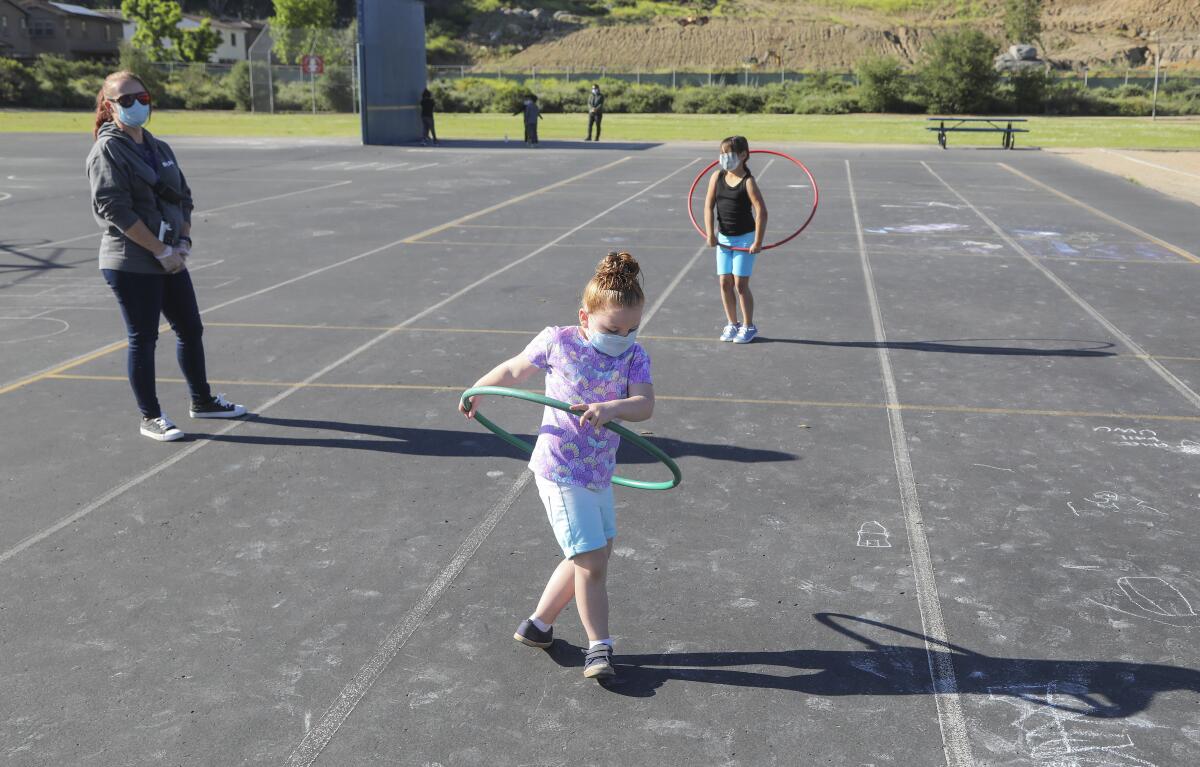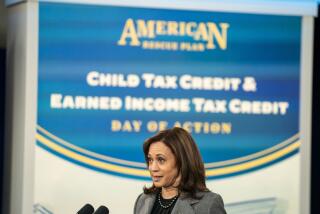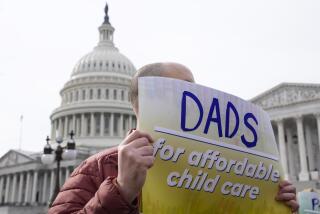Editorial: Want to actually help the economy? Bail out child care providers

- Share via
It’s a sadly telling sign that amid all the protests and political pressure on states to reopen businesses and get people back on the job, there’s been little talk about making sure those returning workers have safe, reliable child care for their kids.
Child care is too often an afterthought for the nation’s political leaders. It’s treated as an optional expense. A lifestyle choice. A woman’s problem. But you can’t have a strong, prosperous economy if a significant portion of the population can’t work. And parents of children too young to be left home alone can’t get back to work as long as schools, summer camps and day-care centers are closed.
If the Trump administration, Congress and the nation’s governors are serious about restarting the economy, they need to figure out how to help child-care providers reopen and stay open.
This is no easy job. Child-care providers face unique challenges.
Most day-care providers weren’t ordered to shut down when states and cities started rolling out stay-at-home mandates, but roughly half of their centers had to close temporarily because they lost enrollment. Child-care providers operated on razor-thin margins before COVID-19; the extended closures have left many on the brink of collapse. Industry groups warn that without some kind of help, the nation could lose about a third of its child-care capacity.
Now — just as parents start to return to work — child-care providers have real questions about whether they’ll even be able to resume operations.
Providers are struggling to keep up with the latest public health guidance about whether it is or isn’t safe to reopen, so many are staying on the sidelines until there’s more certainty. Nor is there a clear answer yet on whether summer camps and community centers will be able to open.
Then there are the teachers and caregivers themselves, many of whom are older or have health issues that put them at higher risk for contracting COVID-19. And it’s still hard to find the masks, gloves and hand sanitizers that are essential safety supplies.
The economics of child care are hard, too. To help minimize exposure and contain outbreaks, facilities are limited to 10 kids per classroom no matter the age, down from 24 in classrooms with older children. That cap may make sense for health reasons, but it dramatically reduces revenue. For some providers such a small enrollment may not cover their expenses, leaving them unable to reopen.
And child care is notoriously low-paid work — the median is less than $15 an hour. Some child-care workers and camp counselors may earn more money on unemployment, thanks to the CARES Act that provides an extra $600 a week through July. That’s not a criticism of the workers; that’s an indictment of how poorly we pay the people who care for our children.
The child-care system was already in crisis before COVID-19. There weren’t enough spaces in child-care programs for all the kids of working parents. There were often long waiting lists for affordable day-care providers. For older children, schools, summer camps and community centers are de facto child-care providers, with programs that stretched from breakfast till dinner. And all of this care can be a huge financial burden on families. In some states, child care costs as much as, or more than, housing.
It’s vital that lawmakers do everything possible to make sure the pandemic doesn’t further weaken the child-care system.
A coalition of child advocacy and business groups has called on Congress to bail out child-care providers in the next relief package. They’re pushing the federal government to provide states funding to help closed day-care centers pay their employees and cover the rent, insurance and other fixed costs so they don’t go out of business while waiting for the kids to return, as Congress has done for small businesses in general through the Paycheck Protection Program. The money could also help subsidize day-care facilities that are barred by public health regulations from enrolling as many kids as they used to.
It’s hard to see how retail clerks, assembly-line workers and other working parents recalled to their jobs in the next few weeks will manage without child care. And it’s hard to see how child-care providers can survive without help.
More to Read
A cure for the common opinion
Get thought-provoking perspectives with our weekly newsletter.
You may occasionally receive promotional content from the Los Angeles Times.










